Does your humidifier smell a little off?
That’s a sign that it’s time to give your humidifier a thorough cleaning.
There are many benefits of using humidifiers, but they also create the perfect environment for mold and bacteria to grow and thrive. That can turn into a major problem, especially if you’re running your humidifier every night while you sleep. You’re breathing that stuff in. Yuck!
No one wants gunk like that in their lungs, so your sleep fam here at Sleepopolis put together a list of the best cleaning tips to help you give that humidifier a thorough cleaning, halt bacteria growth, and continue enjoying the best sleep quality you can get.
How Often Should You Clean Your Humidifier?
Dirty humidifiers can release allergens and irritants into the air, leading to poor indoor air quality (IAQ). Breathing that stuff in may cause or contribute to various health conditions, including dry skin, sinus issues, coughing, or even allergy and asthma flare-ups.
If you really want to keep that bad stuff at bay, you’ll want to give your humidifier a quick clean every day and follow it up with a deep clean once a week.
What You Need to Clean Your Humidifier

You’ll need the right tools for the job before you roll up your sleeves and get busy. Thankfully, cleaning a humidifier often doesn’t call for anything fancy — just a few household staples:
- White vinegar – dissolves mineral deposits and helps disinfect
- Mild dish soap – for everyday grime and residue
- Water – distilled is best, especially for rinsing
- Soft brush or toothbrush – to scrub tight corners and crevices
- Microfiber cloth or paper towels – for drying and wiping
- Hydrogen peroxide or bleach (optional) – adds an extra disinfecting power
- Gloves (optional) – for those sensitive to vinegar or mold
Step-by-Step Humidifier Cleaning Instructions
Once you have your supplies collected, it’s time to get to work.
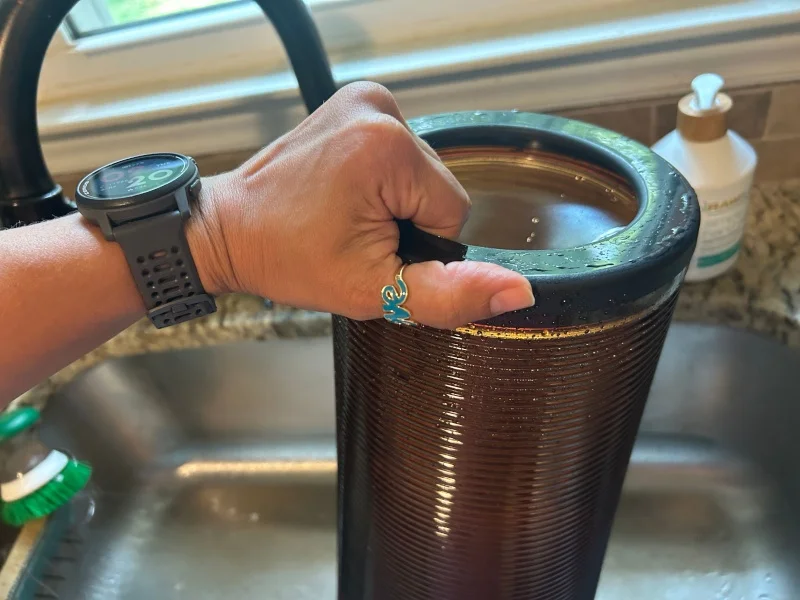
Daily Maintenance Routine
We get it — you’re already hard-pressed for time in the morning. This 2-minute daily maintenance routine is designed to be quick, easy, and effective, so you can get it done and get out the door on time too.
- Unplug the humidifier: Electricity and water don’t mix, so it’s imperative you unplug that humidifier before you start the cleaning. Safety first!
- Empty the tank: Pour out any leftover water to stop bacteria from settling in.
- Rinse with warm water: No soap needed for your daily clean; just fill the humidifier tank with warm water, swish it around, and dump it out.
- Wipe the base: Grab a dry cloth or paper towel and dry the humidifier as best you can.
- Let it air dry: Humidifiers come in some crazy shapes, meaning it’s a challenge to get it totally dry with a towel. So, leave everything disassembled and let the individual parts of the humidifier air dry before reassembling.
Weekly Deep Clean
You can get by with a quick rinse most of the time, but you’ll need to give it a little TLC once a week if you want to get the best IAQ. You’ll need to set aside some extra time for this regimen, but the results are well worth it.
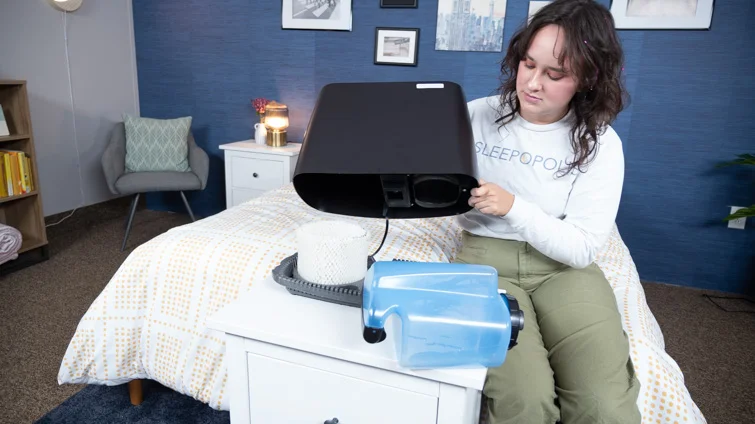
- Disassemble the unit: Remove the tank, lid, and any other detachable parts.
- Soak with vinegar: Fill the water reservoir with a 1:1 mixture of distilled white vinegar and water. Let that sit for 20 to 30 minutes at minimum before you dump it out.
- Scrub thoroughly: Grab a soft brush — toothbrushes work really well here — and scrub those seams and corners. Humidifiers are often tricky to clean due to their shapes, but a quick scrub will help you tackle any residual buildup in no time.
- Clean the base and components: You can use a cleaning solution of water and vinegar or water and mild soap for this step, depending on the material of your humidifier. When in doubt, consult the manual that came with your humidifier.
- Optional disinfect: Water and vinegar alone is often sufficient for keeping the bad stuff at bay, but you may choose to use bleach or hydrogen peroxide for a little extra oomph. Use a ratio of one teaspoon of bleach or hydrogen peroxide per gallon of water.
- Rinse everything well: This step is especially important if you used a bleach solution to sanitize. Thoroughly rinse the tank with clean water until you’re sure you’ve removed any and all traces of vinegar, bleach, or hydrogen peroxide from the tank.
- Dry fully before reassembling: Any remaining water that gets trapped can lead to more mold, so make sure everything is totally dry before you put it back together.
Pro Tips for Humidifier Use
It doesn’t matter what type of humidifier you use, cleaning is an essential step in optimizing IAQ, maximizing the humidifier’s lifespan, and getting the most comfort — and best sleep — while using your humidifier. That said, there are a couple of strategies you can use to minimize the mess and make cleaning even easier.
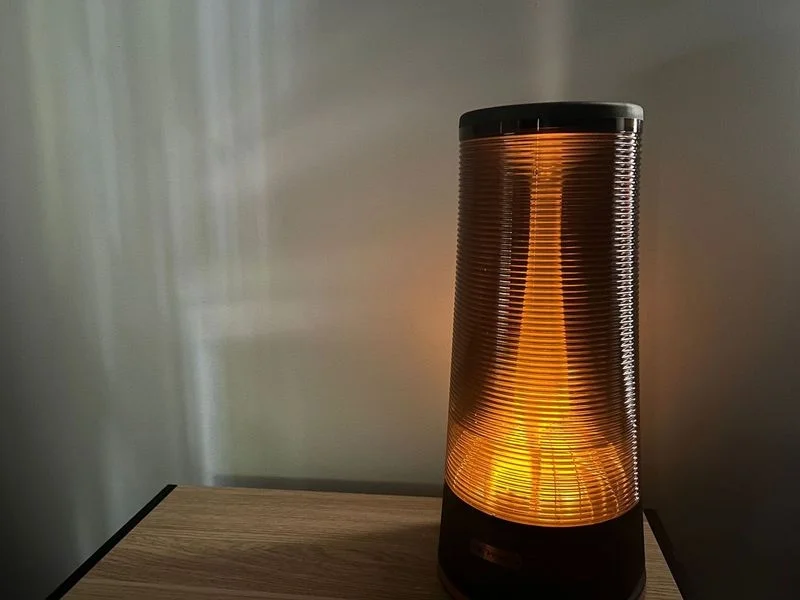
1. Use distilled or demineralized water
If you’re using tap water, you may notice a white dust or residue at the bottom of your reservoir after the water has evaporated fully. That’s because tap water, especially if your region has hard water, often contains dissolved minerals like calcium, iron, magnesium, and more.
Using demineralized or distilled water eliminates this issue because the minerals are removed from the water before bottling. That means you’ll very likely never see that white stuff sitting at the bottom of your tank ever again.
2. Empty the tank daily
It may pain you to dump leftover distilled water down the drain every day, but stagnant water is a breeding ground for bacteria.
So, empty the tank every morning, dry it using a cloth or paper towel, leave it disassembled to air dry, and refill it with fresh water each evening before you lie down to sleep.
3. Replace filters and wicks as recommended
Air conditioners use filters to keep contaminants out of the air and out of your lungs. Some humidifiers operate the same way, using a filter or wick for an extra layer of protection.
If yours has a humidifier filter or wick, consult the manufacturer’s instructions to find out what type of filter or wick it uses, how to replace them, and how often you should replace them.
4. Keep it elevated and away from walls
For the best results, you want to keep your humidifier slightly elevated, at least 2 to 4 feet from the floor, so the mist is dispersed evenly and reaches your nose, mouth, and lungs reliably.
Place the humidifier on a water-resistant surface away from electronics and walls too, as you don’t want to get that stuff wet from condensation or spills.
5. Monitor the humidity level
You want your humidifier to, well, humidify the air by adding moisture, but too much humidity may be detrimental by encouraging mold growth in your living space. That’s why you want to look for that sweet spot between 40-percent and 50-percent humidity.
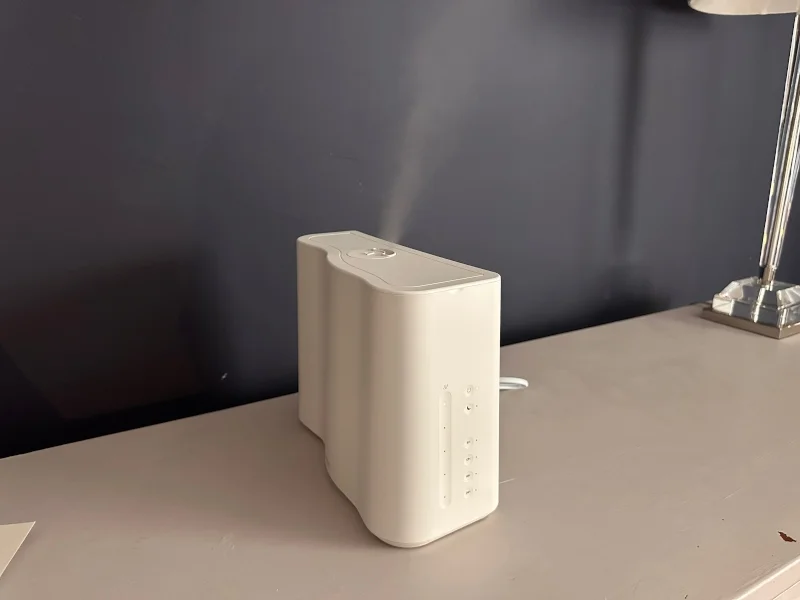
Many modern humidifiers have a setting for this, helping you finetune the humidity level and optimize your comfort, but they can’t account for what the actual humidity will be in your room. For example, a humidifier set to 50-percent humidity may be significantly less in a large room with high ceilings, whereas it may be too much if you’re cramming it into a studio apartment.
No worries — you can use a hygrometer to measure the humidity in your room and tweak your settings to get into that sweet spot with no stress or guessing. Some humidifiers or HVACs have a built-in hygrometer to monitor the room’s humidity, but you can also purchase one as a separate tool.
6. Store it dry
Some folks like to use a humidifier all year long, while others prefer storing it for the summer since the air is naturally humid already. If you’re planning to put away the humidifier for the season, make sure you drain the tank and dry it thoroughly before stuffing it into storage.
Signs It’s Time to Clean (or Replace) Your Humidifier
If you haven’t cleaned your humidifier at all recently, then you probably should clean it as soon as possible to neutralize mildews, molds, and other yucky stuff. Other telltale signs it’s time for a cleaning include:
- Musty or sour odors coming from the tank or mist
- Visible mold or slime inside the base or water tank
- White dust collecting on nearby furniture (a sign of mineral buildup)
- Weird noises or reduced mist output
- Water sitting in the tank for more than a day or two
Most of the time, you can avoid having to buy a new humidifier by giving it a thorough cleaning, but there are some situations where it may be better to cut your losses, hop on Amazon, and grab the best humidifier that fits your budget.
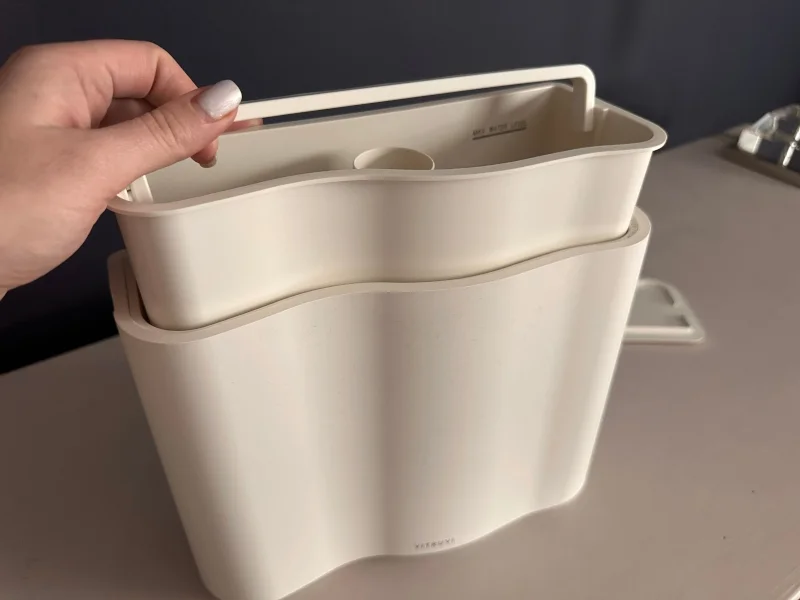
Generally speaking, it comes down to noise; efficient humidifiers are designed to be relatively quiet during operation, whereas old, worn humidifiers may become gradually louder over time as the mechanical components wear out. If your humidifier sounds more like the compressor of an air conditioner kicking on in the dead of night, then you may consider buying something new.
Conclusion
Warm mist humidifiers, cool mist humidifiers — it doesn’t matter what type of humidifier you have, we love ‘em all! They’re a total game-changer when it comes to sleep.
But if you snooze on regular cleaning, you may turn this helpful device into a health hazard. Sweet dreams start with clean air, so follow our handy steps above to keep your humidifier clean and you’ll enjoy great sleep quality for years to come.
FAQs
What’s the best way to clean a humidifier?
The best way to keep your humidifier clean is to rinse it every day with warm water and deep clean once a week with vinegar and a little light scrubbing.
Can I run vinegar through my humidifier to clean it?
No, it’s generally not advised to run the humidifier with vinegar in the tank. Instead, let the vinegar soak for 20 or 30 minutes, dump it out, and rinse a few times until you’re sure all the residual vinegar is completely gone.
How often should I clean a humidifier?
We like to give the machine a quick rinse every day, but setting aside more time for a thorough weekly cleaning is the best way to wipe out the bad stuff and prolong your humidifier’s lifespan.
How do you get mold out of a humidifier?
Keeping up with regular cleaning should make it harder for mold to take hold in your humidifier, but mold and mildew is nothing if not persistent. If you suspect or detect mold in your humidifier, disassemble the unit completely, soak all the affected parts in vinegar or a solution of water and hydrogen peroxide, scrub gently, rinse well, and dry completely.


























